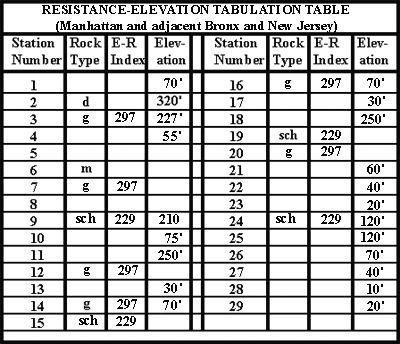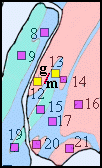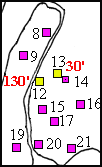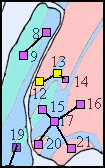THE PREDICTION: One or more areas that have higher elevations should be found to be underlain by more resistant material than adjacent areas with lower elevations.
EVALUATING THE PREDICTION: Elevation data may now be compared to the Erosion Resistance Index to evaluate the prediction.
 If the prediction is fulfilled, how would you expect the Erosion Resistance Index to vary with elevation? If it is not fulfilled, how would you expect the Erosion Resistance Index to vary with elevation?
If the prediction is fulfilled, how would you expect the Erosion Resistance Index to vary with elevation? If it is not fulfilled, how would you expect the Erosion Resistance Index to vary with elevation?





